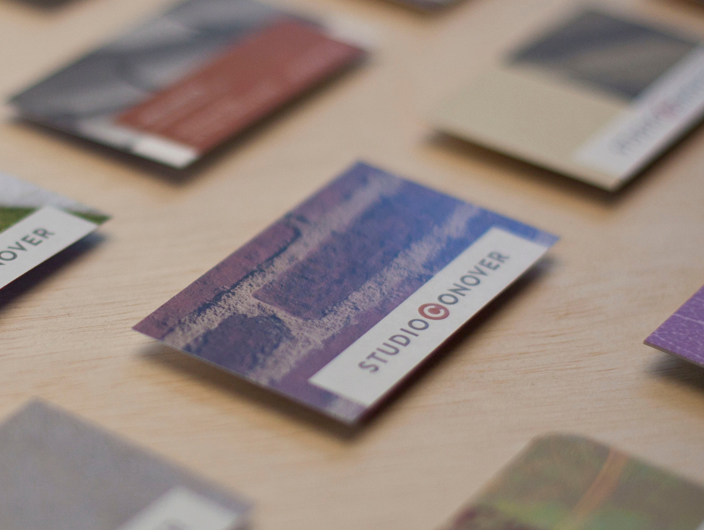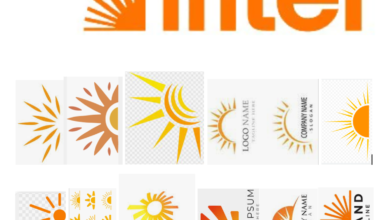[ad_1]
For agency owner Dave Conover, transforming a brand from outdated to outstanding is just another day on the job. Whether it’s real estate or roofing tile, Conover has the adept experience and creativity that it takes to bring a brand back to life. To understand more about how to conceive and conquer a brand refresh, Brandfolder interviewed Dave Conover about listening to intuition, dealing with haters, and keeping your brand assets in order.

Your portfolio shows a wide variety of brand refresh projects. Is this something companies come to you for, or is that just part of the process of working with you?
Dave: I usually do a brand refresh for selfish reasons. Sometimes the assets we inherit are truly wince inducing — they aren’t well done and don’t represent our work.
I love brand refresh projects. Some people on my team love to analyze colors and fonts, but I love the strategy behind it. Sometimes it’s about reflecting an organizational change or sometimes it’s about capturing market share or differentiating a brand from its competition.
For example, we worked with Willis Allen Real Estate on a brand refresh. The owner was getting ready to retire and pass the torch. The logo and company colors were more than a decade old and it was the perfect time to update the brand to reflect this change. We created an updated logo to keep the same feel but used totally new colors. I call it a “Brooks Brothers” palette because it reminds me of sand and blue blazers.

What’s the appeal of a brand refresh over rebranding?
Dave: Most brands can’t do a large-scale brand overhaul – it’s time consuming and expensive. Sure, Berkshire Hathaway can buy up Prudential and do a massive rebranding, but they’ve got substantial financial backing. A refresh helps a brand evolve and still stay recognizable.
Brands forget about the equity they have, so the trick is evolving the brand without creating a disconnect. FedEx did a great job at evolving their brand. They didn’t rebrand everything at once – the company took its time. If you look at the FedEx/Kinko’s branding over time you can really see the evolution. The two brands subconsciously morphed into what it is now — it looks like both brands. It’s a great representation of a successful brand refresh.

And sometimes a brand refresh goes wrong. The Baltimore Ravens did a refresh a few years ago that is the quintessential example of hiring a young person for not very much money. The company ended up getting sued for copyright infringement and had to redo their entire logo.
The Gap is another good example. Their rebrand lasted two days before they switched back to the old logo. That’s a classic example of a brand completely losing connection with its distinctiveness.

Read: Rebrand with Purpose: 4 Things to Consider Before Renovating Your Brand
Is negative reaction something brands should just expect? At what point should a brand listen to or just ignore the haters?
Dave: Social media has created an opportunity for all of us to have a voice – we can all be critics. For example, if Airbnb had rebranded 30 years ago no one would have heard anything negative about it. But now we have outlets and platforms for these voices.
In my opinion, brands take too much of this commentary to heart. If they’ve done their due diligence and thought through the strategy behind rebranding, they should feel confident in their decision. Tim Cook talks a lot about this and Apple is a great example of a brand that never waivers.
As an agency owner, I have to exude confidence and success and be comfortable knowing the brand can’t please everyone. Then I have to help the client get on board with this point of view.
When doing a brand refresh, how do you know which digital assets are distinctive to the brand and which can be thrown out?
Dave: I usually gauge the temperature of a client before deciding on which assets to keep. Some clients want data and market research to drive all decisions and some prefer to use intuitive marketing. I find that most clients are antsy for the artifact – they have a hard time seeing beyond words and pictures on a page. In that case, we start with intuition and maybe create a visual concept first.
I don’t try to sell a client on a comprehensive analysis unless they need it. And when they need it, it’s usually because they need to sell the brand refresh or rebrand to someone higher up in their channel.

__Is it scary to use intuition first? How do you know where to start? __
Dave: Intuition can be easy, depending on the problem you are trying to solve. For example, I just worked with a client whose logo was too small to read at a distance. They make Mastic for roofing projects, so it’s important for their logo to be visible and instantly recognizable. I don’t need a comprehensive analysis to come to that conclusion.
Read: Lane 7: Balancing Laid-Back and Luxury
I work on a lot of “unsexy” products (most of our clients manufacture building products), so I see those kinds of issues a lot. For example, a local company here in Southern California manufactures cast concrete park benches and those concrete hot coal receptacles you see at parks and picnic areas. To me, their typography is somewhat clumsy and the illustrated flame that corresponds with the type looks a bit inorganic. Selfishly, I’d like them to consider an update.

I’d never think about a brand like that needing a refresh. You have definitely opened my eyes up to a whole other area of design.
Dave: I always tell design students they need to learn to find beauty in the mundane. When I got into this business I thought I’d be designing record albums — I never would have gotten into it if you had told me I’d be working with manufacturers of building products.
Over the years I’ve learned that anything can be boring. Even the people that work on big accounts, like Starbucks, can get bored of the same thing again and again if they don’t have gratitude about the work.
It seems like some brands get stuck in a cycle of constant refreshing and rebranding, oftentimes at the expense of their most recognizable assets. Is it the customers who have a short attention span or the marketers?
Dave: I come from an old school theory of consistency and working on a grid. Now, brands need to be more flexible. They need various messaging because you can’t say just one thing. But a lot of brands get this wrong – today, the risk for a brand is the uncoordinated voices for different constituencies.
Even if you’ve nailed flexible messaging, it’s important to strip away the tertiary and secondary messages and always go back to the key message. That’s when this kind of work gets boring, but boredom isn’t bad. I always say, ‘Just when you start getting sick of it is when your customer starts to recognize it.’
When you work in this industry, you are constantly aware of how marketing is placed and it’s hard to look at things from a consumer point of view. Every time I go to the movies I can’t help but notice and think about the product placement – it’s hard to stay with the storyline.
Marketers need to be very careful that they don’t pursue a rebrand or brand refresh in order to keep themselves engaged – consumers do not see their logo and tagline day after day. You always have to think of things from their perspective.

Speaking of boring, I notice a lot of brands using what I would call canned messaging – it’s the same few statements over and over again. Do you ever run into issues when creating flexible messaging? It seems like there would be more room for miscommunication.
Dave: Intuition and subjective opinions must be articulated into words – a design brief. This really helps make sure the client understands what we are trying to accomplish.
I also use the Carl Jung table of archetypes to help us create brand messaging and assign characteristics to a brand. We’ll take a characteristic like “nourishing” and then create a word cloud to help craft the messaging. Someone with nourishing characteristics will always use certain words, no matter what the message is. That’s how you stay consistent, but flexible.
Read: Should Your Brand Identity be More Responsive?
How can a brand keep their audience’s attention without losing its identity?
Dave: It’s easy to say engaging content is the key to capturing attention, but it’s more complicated than that. We are all experiencing email and online fatigue – we shut it all out. In addition to engaging content, brands need to look at delivery and find other platforms. The only true measurement we have right now of effectiveness is response.
Brands have an aptitude to glom onto whatever platform is popular without thinking about it all the way through. QR codes are a good example of this – how many consumers use those now?

__I have to ask you a little more about refreshing. Does it have to be a big, expensive project? __
Dave: Brands have a tendency to treat their assets like a digital shoebox. It’s like how we store pictures of our kids – everything just gets thrown into a shoebox for later.
If brands look deeply enough they have content that can be repurposed. It’s like kid’s toy chest. The kid complains there’s nothing to play with until you dig down to the bottom of the toy chest and unearth some forgotten toy.
Clients always think they need something new – especially if they work in sales. You can’t look myopically at what you have. I always conduct an audit and will inevitably find content that has crossover.
I promised we didn’t have to talk about Brandfolder, but that’s a huge benefit of our service. Archiving is so important for brands, especially if they want to revive old concepts. I notice a lot of sports teams doing that – running marketing promotions using older, nostalgic logos and colors. The old assets have to stay organized and preserved if you want to get it right.
Dave: I think for a lot of brands, digital asset management is like hoarding. They just keep everything without thinking about what to toss and what to keep. It all just gets kept in random places. Eventually, someone will need the time and discipline to go through it all, but who has the resources for that?
But, when you’re disciplined enough to archive and curate on a regular basis you remain aware of what you’ve got. Asset management is absolutely necessary.
I couldn’t agree more.
Morgan Quinn is a recovering lifestyle blogger and the Digital Content Manager for Brandfolder, a simple and easy tool for managing digital brand assets. She has created content for brands like Mint.com, Quicken, Ugg Australia, and Martha Stewart. She threw in the towel on Twitter, so follow her on LinkedIn instead.
Source link






